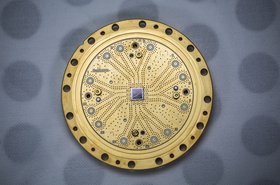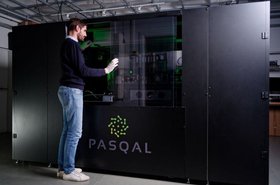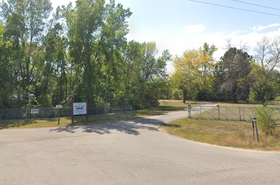The Lawrence Livermore National Laboratory (LLNL) in Livermore, California, is planning a smaller companion supercomputer to join its latest exascale system.
Installation of the lab’s El Capitan supercomputer started earlier this month, with the more than two exaflops system set to go live in 2024/2025.
However, El Capitan is set to be joined by a smaller companion system, called Tuolumne, for unclassified research. The smaller system could still offer more than 200 petaflops of performance, making it one of the most powerful non-exascale high-performance computing (HPC) machines in the world.
"We are planning to get an unclassified system that will be called Tuolumne," said Bronis R. de Supinski in a recent interview with Exascale Project. De Supinski is the chief technology officer for Livermore Computing at LLNL. "It will be roughly between 10 percent to 15 percent the size of El Capitan."
First announced in 2019, El Capitan will be based on HPE Cray EX supercomputing architecture and will be powered by AMD CPUs and GPUs.
No delivery date for Tuolumne has been shared. While 15 percent of two exaflops would be 300 petaflops, even the bottom estimate of 200 petaflops would place this system in the top five of the current Top500 list of most powerful supercomputers, and likely still top ten after exascale systems currently in development come online.
The first mention of Tuolumne was in 2021, when LLNL announced the “RZNevada” early-access system designed to allow researchers to test the El Capitan hardware and software stack. No details around Tuolumne were shared beyond the fact it would be an unclassified companion system to El Capitan.
“El Capitan will be pretty heavily used pretty much - not quite exclusively but nearly exclusively - for stockpile stewardship. Tuolumne will be contributing more to the wider range of scientific areas,” de Supinski said.
Both systems take their names from California landmarks. El Capitan is a well-known rock face in Yosemite. Tuolumne Meadows is one of the largest high-elevation meadows in the Sierra Nevada in Yosemite.
The companion system arrangement isn’t uncommon. One of LLNL’s existing HPC systems, the 125 petaflops Sierra launched in 2018, has a smaller partner system called Lassen. That IBM Power-9-based system offers 23 petaflops of peak performance and includes 3,168 Nvidia V100 GPUs.
Elsewhere in the interview, LLNL’s de Supinski said the organization last year completed an upgrade of the data center set to house El Capitan.
“We had to first start with a big project for getting the whole building ready; that was called the Exascale Computing Facility Modernization Project that [High-Performance Computing Chief Engineer] Anna Maria Bailey led for Livermore,” he said. “And that has increased the power available in our main data center on our main compute floor to 85MW… and gives us about another 15MW for cooling. So we actually have a 100MW data center now.”
The US currently has one exascale supercomputer in operation: Frontier, which has 1.194 exaflops and is housed at the Department of Energy’s Oak Ridge National Laboratory in Tennessee. At the Argonne National Laboratory in Illinois is Aurora, a two-exaflops supercomputer, for which installation was completed at the end of last month.







